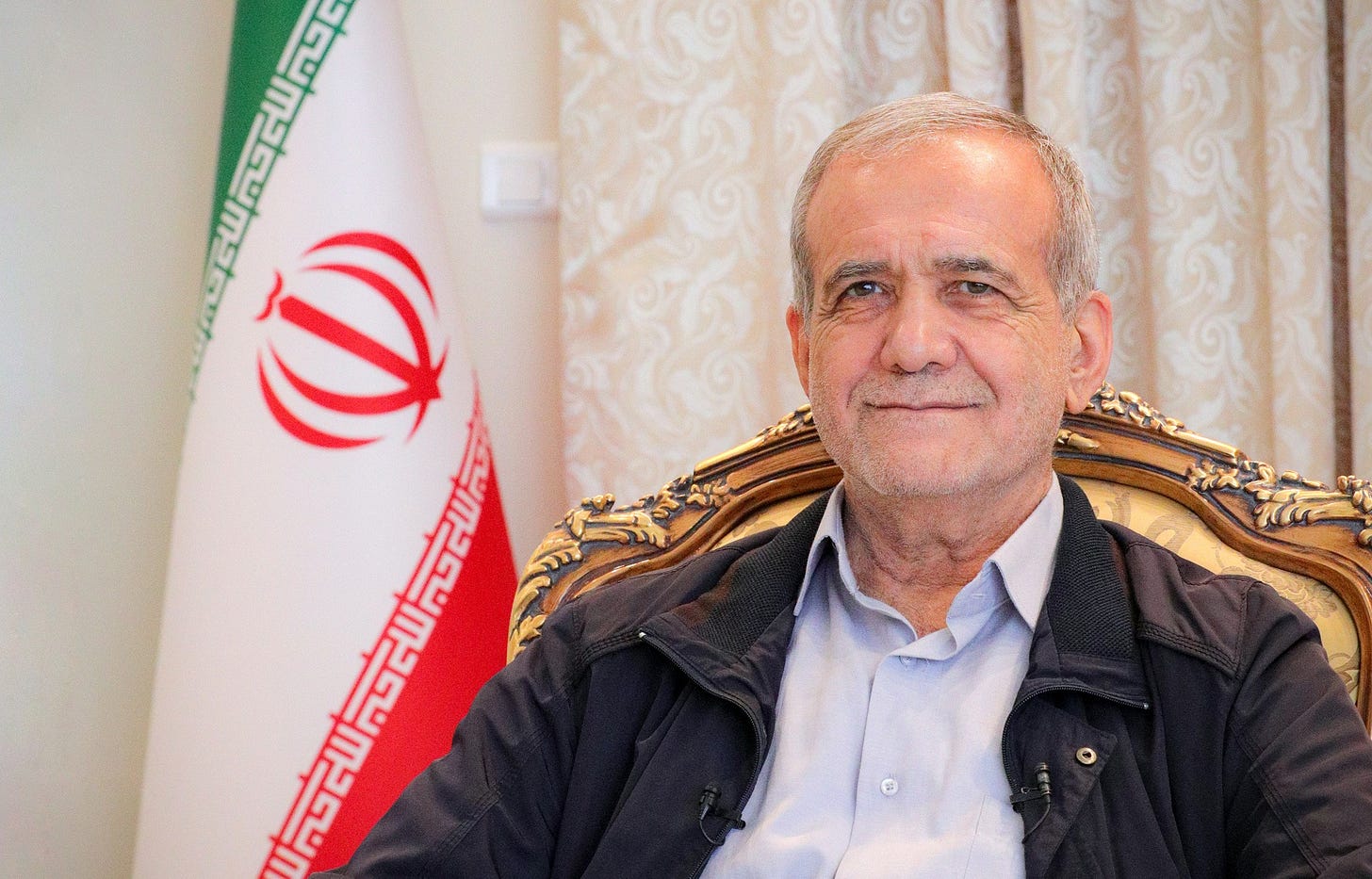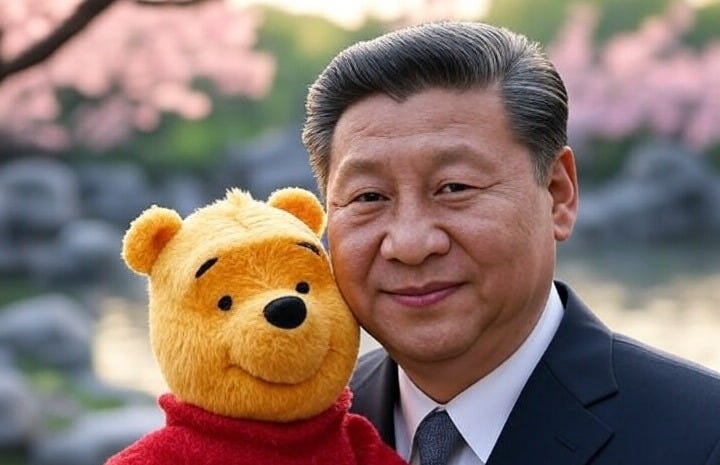I am already tired of seeing Reza Pahlavi celebrated as the new shah of Iran. He will never live long enough to see the inside of the country again. The regime is not going anywhere for him, and he has no real domestic support base to speak of. Former president Mir-Hossein Mousavi too has called for a new constitution. He lives under house arrest, however, so don’t hold your breath.
Which is not to say that the Islamic Republic is doing well. “The clerical establishment has lost its ideological hold, its regional reach, and its deterrent capacity,” Mehdi Parpanchi writes. “It still censors, still imprisons, but no longer inspires fear or belief. What remains is brittle. What’s emerging is not reform. It’s freefall.” Collapse. But don’t get too excited.
Speaking to the situation, Blaise Misztal and Jonathan Ruhe suggest a strategy of “making it harder” for Tehran “to carry out functions and maintain authority” rather than attempting to impose regime change from the outside. “Regime change is about a specific moment in time,” they write, whereas “regime collapse strategy accepts that it cannot know when its efforts might bear fruit.”
Military force is not needed. Instead, “regime collapse leaves the actual task of toppling and replacing existing power structures to the people inside that country.” Rather than endorse Pahlavi or some other exile group, “the United States, working with international partners, should seek out, engage with, and offer training to any democratic, secular opposition that arises organically inside Iran.”
Ah, yes. The democratic and secular opposition that is just waiting to burst forth organically in Persia the very instant the clerical regime disappears in a puff of rationalism. Surely it exists, and is not just a projection from the imaginarium of western liberalism? Surely American support for this liberal secular opposition will not be perceived badly in Iran, by Iranians?
I have a better plan: build a metaphorical wall around Iran until the Islamic Republic has collapsed and changed on its own and comes to America asking to be friends again. A literal wall might be less expensive than any attempted regime change. Stop trying to save Iran. No outside power can ever save Iran; they can only ever get themselves in trouble by trying.
One by one, Iran’s proxies have crumbled. Notably, the Iraqi militias sponsored for so long, and at such cost, by the Islamic Revolutionary Guards Corps (IRGC) of Iran were completely out to lunch when Israeli F-35s flew through Iraqi airspace with impunity to bomb targets in Iran. The Trump administration is pressing the Iraqi government to integrate those militias into the regular forces. Iraqi president Mohammed Shia al-Sudan is keen to remove the threat they represent to his own power.
“These groups have been shaped by previous struggles for influence in Iraq between the U.S. and Iran, emerging warier of involvement in external conflict and more independent of external backers,” The New York Times explains. “The Iran-linked militias have also become central players in the Iraqi government, earning billions of dollars from state coffers, operating extensive business networks and holding more power than ever before.”
Why put the good times at risk on behalf of Tehran? “If their standing took a blow, it could put in jeopardy about $3.5 billion allocated in the Iraqi budget, according to the finance ministry, to pay militia salaries and provide other forms of support.”
Nor is Iran pushing back. Commander Esmail Ghaani of the Quds Force, which gives direct support to Iran’s proxies, is reportedly encouraging the militias to keep a low profile for fear that the US and Israel will destroy them and eliminate the IRGC’s influence in the country.
With their foreign proxies unable to protect Iran from Israel or the United States, the entire defense strategy of Tehran is in tatters. However, the real threats to the regime now are not any human actors, but the consequences of decisions the regime made years, even decades ago.
“We must apologize to the people that we are in a situation where they have to bear the brunt,” Masoud Pezeshkian, the elected president of Iran, said of the electricity blackouts that were hammering the economy last November. “God willing, next year we will try for this not to happen.” But the rolling blackouts are still happening. For despite huge oil and gas reserves, the clerics have managed to create an energy crisis through underinvestment, populist energy subsidies, corruption, and copious mismanagement.
More challenging still is the water crisis brought on by five years of drought and all the usual problems of clerical rule. “The government announced this week that many reservoirs, particularly those that supply the capital, Tehran, with drinking water, were drying out,” reports the New York Times. “Water supplies for Tehran are predicted to run out in just a few weeks, officials said, pleading with the public to reduce water consumption.”
The Tehran Province Water and Wastewater Company announced this week it had reduced water pressure to such low levels that in Tehran — a city of 10 million people, many living and working in high-rise buildings — water could not flow above the second floor of apartment buildings.
Making the problem worse, of course, are all the illegal wells that the IRGC drills everywhere to meet its own needs, reducing the aquifers. Overdevelopment, intensified agriculture and industry, and too many dams built in a fit of stimulative spending all play a role in the disaster.
Of course, even if the water runs out, and the lights go out, the regime will still not fall by default. On the contrary, the clerics and the IRGC will make their grip even tighter as they preside over the collapse. No one can impose change from outside, not even as the state falls in on itself. Eventually, someone — probably not Pezeshkian, but definitely someone who is already living in Iran — will emerge from the rubble with a new plan, for a new Iran.
The Wild Rumors About Xi Jinping And The CCP Are Just Brand Management
It has been clear for months that something is going on in China. But what? Rumors of change have been rampant. Xi Jinping, President of the People’s Republic of China, was said to have lost power in a bloodless coup; he was under house arrest, and being forced from office this September; a meeting of the politburo in June turned into a struggle session, with a tearful confession from Xi, who had to miss the BRICS summit in July because he is no longer allowed to leave the country. And so on.



